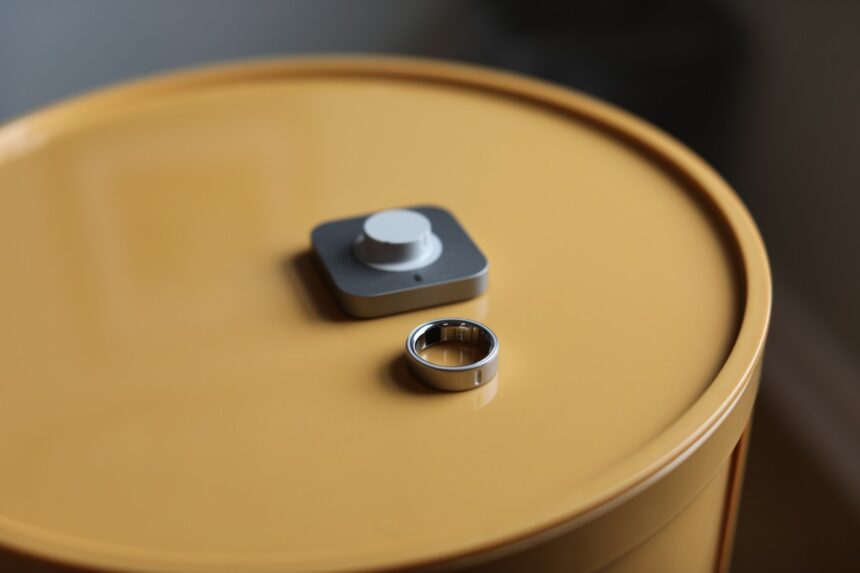Oura didn’t invent the smart ring category. It did, however, make all that came before it effectively obsolete. The category dates back more than a decade; TechCrunch wrote about an NFC ring in 2013.
The Motiv Ring is of far more recent vintage, but it ultimately struggled to find the right use case before being sold off to a digital security company just as the pandemic was cresting on U.S. shores.
As a company, Oura dates back to 2013, launching its first ring two years later via Kickstarter. It was, however, COVID-19 that truly launched the company into public consciousness, via high-profile partnerships with sports leagues. The NBA garnered the most headlines, as it adopted the ring to detect early signs of sickness while teams played in the bubble.
The company found eventual success through a passive fitness tracker model. Rather than seeing the small form factor and lack of display as a detriment to the product’s efficacy, the company leaned into a model wherein such passivity is more feature than bug.
Oura CEO Tom Hale recently told me that nearly two-thirds of its user base owns another wearable. This is an extremely important data point when considering the smart ring’s role in the broader wearable fitness space. Among other things, it points to a product that works well in tandem with devices like Apple Watch, rather than attempting to compete with them outright.
Like other smartwatches, the Apple device beeps, buzzes, and flashes, demanding your attention. Sure, there’s a sense it can liberate the wearer from staring constantly at a phone, but it’s always there, vying for immediate attention. Sometimes that’s a good thing. If you’re actively engaged in a workout, for instance, or if you’re the sort who needs a little haptic motivation to get in your steps each day.
Though nice looking for what it is, Oura’s ring is designed to be forgotten. It’s a straightforward task for a ring — doubly so with the Oura Ring 4. Little has changed to the ring’s exterior; it remains a minimalist metal band. The interior, on the other hand, is more flush, courtesy of recessed sensors. It’s a small change, sure, but it dramatically improves the ring’s comfort level.
I’m among those who never adopted Oura or similar devices because I don’t like the way rings feel (sorry, ladies). The unevenly structured sensors of earlier models only exacerbated that discomfort. After wearing the Oura 4 this past week, I can confirm the new ring is much more comfortable.
That’s likely also thanks to an expanded number of sizes, now ranging from four to 15. Despite my having tested the last couple of rings, Oura insisted I receive another sizing kit, as things have shifted overall. Currently, the ring is comfortable enough that I mostly don’t notice.
Blending into the background is the whole game. This is a big part of why sleep was a cornerstone early on. I could be sleeping better. Most people reading this could probably say the same. But wearing a smartwatch to bed no doubt impedes many folks’ ability to fall or stay asleep. A ring, on the other hand, is entirely manageable.
Even more essential to the sleep issue is the question of battery, which continues to be the Apple Watch’s biggest issue. The company has continued to tweak its software, but as it stands, those who want to wear their device for both activity and sleep tracking will have to carve out time to charge the device before bed.
This is another strength of passive tracking. Sure, rings provide far less room in which to stick a battery, but the lack of power-hungry elements like displays go a long way toward extending battery life by a matter of days, not hours.
Oura rates the Ring 4 at up to eight days on a charge, up from the Ring 3’s seven. I made it through four days my first go-round before my phone sent an alert that I really ought to consider charging it up before bed. It didn’t hit the maximum suggested by Oura, but again, this is a totally different ballgame than Apple Watch numbers.
Activity tracking is a harder sell than sleep in the world of smart rings. The product’s lack of display is definitely a highlight when it comes to sleep hygiene, but daytime fitness is a different story altogether.
Oura has some features designed to engage the user, sent as notifications through the phone. After 50 minutes of sitting, for example, it will remind you to stretch your legs. It will also let you know when you’ve hit the halfway point toward your activity goals. These kinds of nudges aside, the smart ring doesn’t employ the sort of gamification strategy that has drawn many folks to wrist-worn devices.
It’s clear why so many Oura users opt to wear these devices together. Using the Ring 4 along with the Apple Watch Series 10 over this last week and change, it’s apparent that the products complement each other well. Rather than surfacing immediately actionable items, the Oura Ring is designed to monitor more gradual health trends over time.
Because of this, it generally takes a bit of wearing to develop a baseline to provide more complex insights. Beyond the heart rate monitoring and exercise minutes, Oura is striving to provide a fuller picture of health. This includes things like Readiness and Stress — factors that can’t be quantified with a single sensor’s metrics.
Oura has made clear that the Ring stands at the foundation of a broader health ecosystem play. That’s the motivation behind the company’s recent acquisition of Veri, which will find Oura planting its flag in the world of blood sugar monitoring. Smart ring manufacturers have demonstrated that a lot can be accomplished around the finger.
The company’s future is expanding on the metrics it collects and leveraging new tools like foundational models to provide more customized insights. For those things like glucose monitoring, which can’t be accomplished with the form factor, Oura will leverage third-party devices.
During my time with the new Ring, I found it worked quite well in concert with the Apple Watch, whether it’s incorporating workouts into its own stats or sending progress notifications to the wrist-worn device. The Oura Ring 4 is a minor upgrade over its predecessor, all told. If you picked up a Ring 3 in the past year, the FOMO shouldn’t keep you up at night. The biggest advance comes down to comfort, with its flush interior.
At the end of the day, Oura is a software play. That was evident when the company shifted to a subscription service early on, and it’s still clear as it rolls out new features by way of its Oura Labs testing platform. The Oura Ring is simply a handful of sensors wrapped around your finger. The real value is how that information is used.






